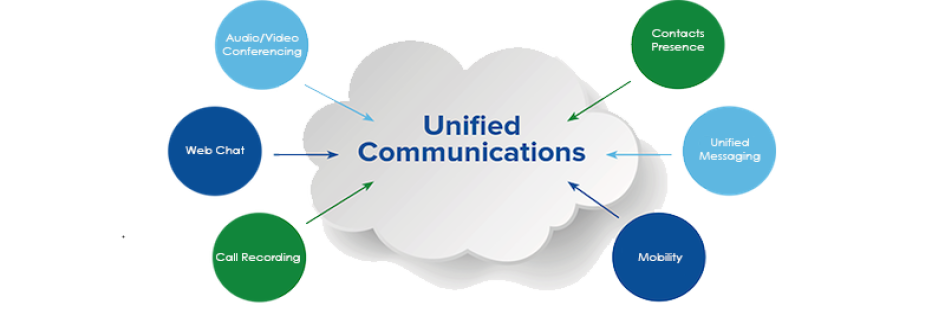
Software that unifies many collaboration and communication platforms into a single user interface and application is known as unified communications (UC). Voice calling, video conferencing, corporate SMS, instant messaging, website live chat, presence, file sharing, virtual whiteboards, analytics, and more are all integrated.
Users using unified communications systems can transition between several devices and communication channels without losing their place during a session, which improves user experience and streamlines productivity.
In place of the conventional PSTN, Unified Communications (UC) employs a high-speed Internet connection to deliver and receive data over the VoIP/SIP network.
For instance, while conversing through voice, the VoIP network transforms vocal sounds into tiny data packets. The recipient receives these data packets via the Internet and reassembles them into understandable words or sentences.
Users of UC platforms can connect on their smartphones, tablets, laptops, desktop computers, and even smartwatches using the unified app or any browser.
In addition to offering a variety of communication channels, Unified Communications solutions frequently offer customization choices via API connections that enable compatibility with other well-liked platforms and services. For instance, a certain unified communications system may enable you to include activity from third-party websites like Microsoft Office, Zendesk, or G Suite.
Unified Communication systems can significantly enhance team communication and collaboration, boost employee productivity, and provide significant operational cost savings, so it's not surprising that demand is growing.
All channels and devices automatically sync conversations. Without skipping a beat, users can start a conversation on one platform, like SMS texting, and end it on another, like social network messaging.
By providing various communication channels (sometimes with advanced features) on a single platform, unified communications (UC) improves business communication and increases flexibility for customers and employees.
VoIP phone systems offer limitless local and long-distance calls as well as cheaper prices for international calls because users make calls through the Internet rather than the PSTN. VoIP allows businesses to cut their monthly telecom costs in half compared to traditional phone systems.
Administrators can generate user/department extensions, local company phone numbers, and toll-free vanity numbers.
Face-to-face video meetings are one of the most crucial communication methods, especially in light of the surge in the number of distant workers.
Blended teams have access to rapid communication, the ability to swap between devices during video conferences, the ability to plan meetings in advance, and the ability to start ad hoc meetings from the instant messaging interface.
Several messaging systems, including chat, SMS text messaging, social network messaging, and MMS messaging, can be used with unified messaging to communicate in real-time.
Conversations can switch between messaging channels without breaking the flow of the conversation since messages are synched within the single Unified Communications interface.
Version control, live file editing, and real-time team chat messaging provided by UC team collaboration technologies help avoid misunderstandings and free up users from the need to send and receive regular emails.
Basic task management features assist identify workflow bottlenecks, make it easier to stay on top of deadlines and different projects, and set clear expectations for team members.
Digital whiteboards allow users to work together on concepts and ideas while keeping track of important meeting points, and screen-sharing capabilities make sure everyone is communicating verbally and physically.
The virtual faxing feature of unified communications systems allows users to send and receive faxes via email rather than traditional fax machines.
Even if the end user is on the phone when the fax arrives, they will still receive it. Additionally, they can save old faxes in the tier UC system and receive alerts when a fax is delivered.